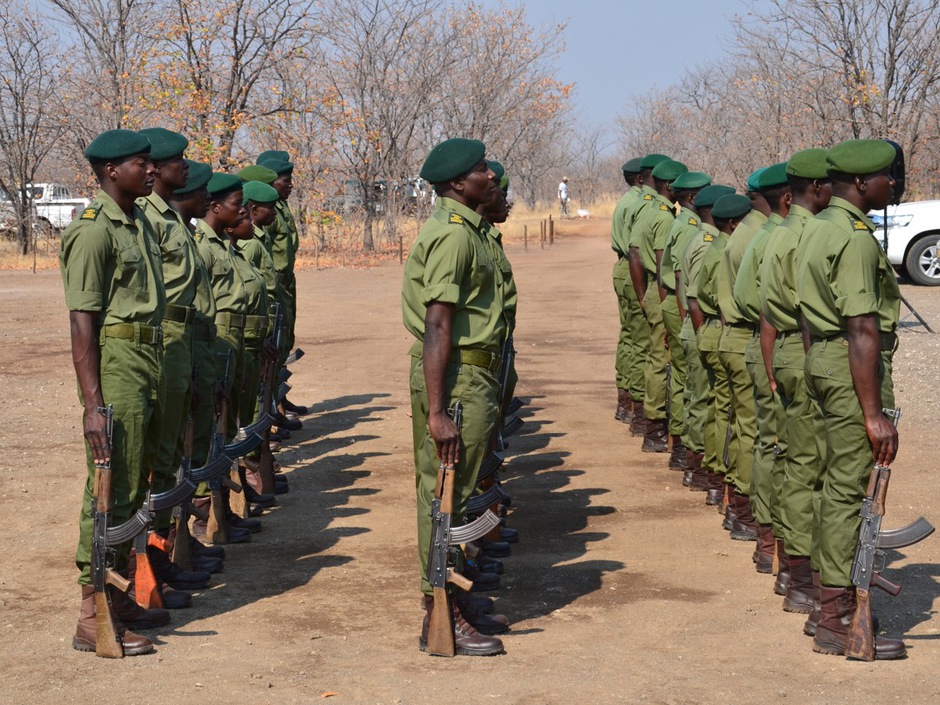BY NOKUTHABA DLAMINI
The Zimbabwe Parks and Wildlife Management Authority (Zimparks) has bemoaned lack of resources, which it says puts its rangers in harm’s way in their line of duty.
Tinashe Farawo, Zimparks spokesperson, told VicFallsLive that a number of rangers have recently died or were seriously injured after encounters with dangerous wild animals and poachers.
Farawo spoke as Zimbabwe celebrated Rangers’ Day on Saturday.
Zimparks employs 3 000 rangers at nature reserves across the country.
“These are the women and men, who spend 21 days per month in the bush looking after our sacred animals and they experience extreme weather conditions,” he said.
‘Like at the Hwange National Park temperatures go as far as 45 degrees Celsius while in Nyanga they drop to go as low as three degrees Celsius as the rangers fight poachers
“They are not only threatened by poachers, but they are also threatened by the same wild animals.
“Just last week one of our ranger was gored to death by a buffalo while on patrol and only two years ago, two of our officers were killed by poachers who threw them into a dam in Kariba and that’s how they lost their lives.”
Farawo added: “Some of our rangers have also sustained permanent injuries while others have also been disabled after being bitten by Tsetse flies and these are sad examples to us.
“It means that we should be well resourced to save both the wildlife and our frontliners.”
World Rangers day is observed every year on July 31 to celebrate rangers who get killed or injured while on duty.
The day is also set aside to celebrate the work that rangers do to protect the world’s natural and cultural heritage.
According to the World Wildlife Fund (WWF), the day offers a chance for people to support the work of rangers, which ranges from environmental campaigns to education.
A 2019 global survey of the working conditions of rangers by WWF highlighted that, on average, rangers in Asia and Africa worked 70-90 hours every week while more than half of them bought their own boots and uniforms.
The report said in a 12-month period, just 26 percent of rangers in Africa and 11 perceived in Asia received vital emergency first aid training that could save their own or their colleagues’ lives.
“Despite their dangerous jobs, rangers often don’t have access to effective life and health insurance schemes,” the report says.
“What’s more, fewer than 50 percent had access to an employee insurance scheme that provided compensation for serious injury at work, or a job-related fatality.
“With many rangers being the main provider for their families, and often coming face-to-face with armed poaching gangs, the statistic is shocking.”
Emma Pereira, communications manager at Save the Rhino conservation organisation said Covid-19 has complicated the situation even more.
“With the almost overnight shutdown of international tourism, funds that might have provided more sophisticated security systems or advanced training to support rangers’ work disappeared,” Pereira said.
“Over the past year or more, wildlife reserves have been scrambling to find enough funding for basic costs like paying salaries, putting fuel in vehicles and buying PPE.”

 Slider3 years ago
Slider3 years ago
 National4 years ago
National4 years ago
 Tourism and Environment4 years ago
Tourism and Environment4 years ago
 Opinion4 years ago
Opinion4 years ago
 Special reports4 years ago
Special reports4 years ago
 National4 years ago
National4 years ago
 National3 years ago
National3 years ago
 National3 years ago
National3 years ago



